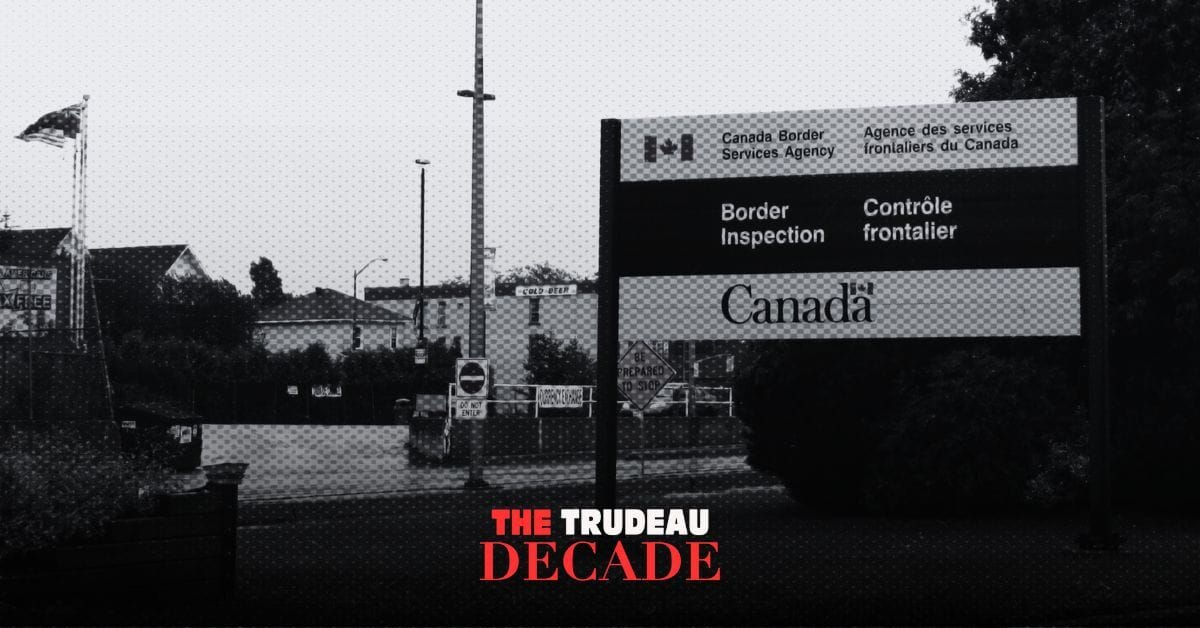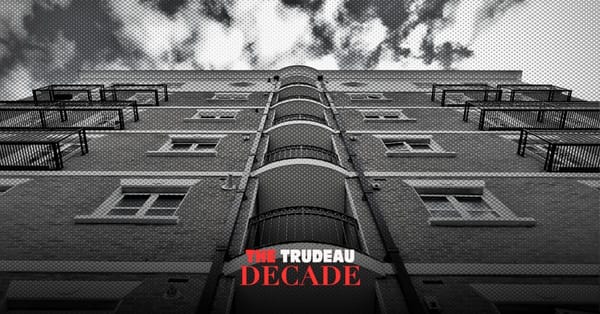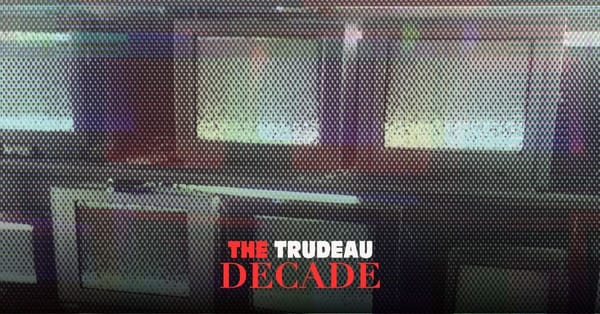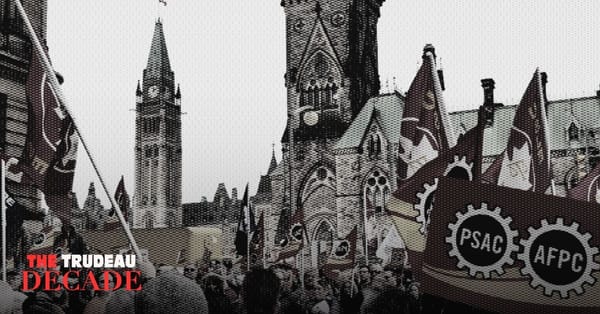
Where We Are
Months after he was first elected, Prime Minister Justin Trudeau hugged Syrian refugees as they arrived at Toronto Pearson International Airport. Nearly a decade later, he has blocked permanent residency pathways, blamed immigrants for policy failures and increased deportations to their highest levels since 2012.
Despite what appears to be a policy change, the goal has always been the same: ensuring corporate profits. Even when immigration was relatively high under Trudeau, pathways to permanent residency and citizenship were difficult. Without permanent status, vulnerable immigrants were exploited by employers and others.
But as the housing crisis worsened, and with his poll numbers falling, Trudeau saw an opportunity to avoid blame for his inaction. In January, he announced cuts to international student rates, insisting it would be unfair to invite people who had nowhere to stay. Soon after, Trudeau claimed the surge in immigration was putting pressure on housing and that restrictions would help close the housing gap.
The lie of protecting international students from being unhoused unravelled when the government tightened eligibility for post-graduate work permits. Trudeau then moved from international students to targeting work visas, putting new restrictions on them in municipalities with unemployment rates higher than 6 per cent.
The message was clear: immigrants are taking jobs and the solution is to remove them from the workforce. Around 1.2 million temporary residents will have their statuses expire in 2025, leaving their futures uncertain.
How We Got Here
It’s hard to believe that this is the same prime minister who brought in a record number of immigrants, with more than 493,000 and 468,000 coming in 2021-2022 and 2022-2023, respectively. The number of international students in Canada is also now at more than 1 million, a nearly threefold rise since Trudeau took office. And in 2023, Canada experienced its highest population growth rate since 1957.
Still, the signs of what was to come were there.
As United States president Donald Trump cracked down on immigration in his first term, Trudeau tweeted, “To those fleeing persecution, terror & war, Canadians will welcome you, regardless of your faith.” Yet under the Canada–United States Safe Third Country Agreement (STCA), refugees who arrive in the U.S., fail to make a refugee claim there and then enter Canada regularly can’t make an asylum claim here, unless they have an exception.
Trudeau’s claim that refugees would be welcomed regardless of their faith or identity was also a lie. For example, Canada has welcomed around 334 Gazans over the past year compared to nearly 300,000 Ukrainians since Russia invaded the country. The government has justified the limitations on Gazans based on what Canadians For Justice and Peace In The Middle East refers to as the “racist trope of Palestinians as security threats,” whereas no concerns have been raised about Ukrainians despite the presence of neo-Nazi militias in the country.
Meanwhile, under the Seasonal Agricultural Worker Program, people from the Caribbean and Mexico are hired on a temporary basis. With their work permit tied to a specific employer, they’re prohibited from switching jobs, leaving them powerless. A United Nations special rapporteur even compared this program to a form of modern slavery.
If Trudeau really cared about migrants, he would have torn up the STCA, brought in significantly more refugees from Gaza and granted permanent residency to those arriving to start a new life. Instead, migrants were consciously put into vulnerable positions, allowing the rich to make even more of a profit off their labour than they would with Canadian workers. This same vulnerability now makes them a scapegoat for the housing crisis and unemployment, allowing policy makers, real estate speculators, and others to avoid accountability for their role in it.
Where We Might Go
It appears that the Conservative Party will win the next federal election, and Pierre Poilievre will become the new prime minister.
Unlike others on the right, Poilievre has at times tempered his language on migration. For example, while denouncing Trudeau’s immigration plan in Parliament, Poilievre also said there is “nothing compassionate about inviting people without a place for them to live.” Yet at other times, Poilievre sounds more like Trump, asking in Parliament: “Why will the Prime Minister not reverse the damage he has done to our borders, secure our country and stop the terrorism?”
This sort of catastrophizing suggests a radical overhaul is coming. Still, if Poilievre does become prime minister, little is likely to change in terms of migration because even the most xenophobic politicians in the West have often failed to bring immigration down. Former prime minister Stephen Harper, who warned about immigrants bringing in crime and terrorism, allowed immigration rates to continue to increase, at times higher than the previous Liberal government. After Brexit, immigration to the United Kingdom skyrocketed, with a record number of people arriving in 2022. Trump, meanwhile, deported fewer people as president than Barack Obama in either of his terms.
There are three reasons that help explain why this is the case.
First, liberal politicians typically use progressive language in an attempt to hide their bigotry, while the right has no reservations about using explicitly racist rhetoric — rhetoric that often leads to mobilization from liberals and leftists. For example, thousands protested in response to Trump calling Mexicans rapists and referring to some states as “shithole” countries, but far fewer did so when Biden decided to lock children in cages and build Trump’s wall. These protests didn’t change Trump’s policies, but they did lead to the creation of sanctuary cities and direct action against deportations.
Second, politicians that use xenophobic rhetoric often don’t actually want to keep immigrants out. Instead, their goal is to deny immigrants status, making them vulnerable and thus more exploitable. Even neo-fascist Italian Prime Minister Giorgia Meloni has allowed migrants to come as foreign workers to plug labour shortages in Italy.
Third, in countries with low-birth rates, such as Canada, businesses need immigrants to replace and expand their workforce. Capital rules immigration.
The most likely change under Poilievre will be with refugees. Enjoying few rights, and with many Canadians believing they’re cheating the immigration system, refugees are a convenient scapegoat for economic woes. As long as Poilievre avoids the most racist rhetoric, he will likely succeed in bringing down the number of admitted refugees throughout his time in power.
Liberals and leftists, myself included, have denounced Poilievre as a far-right radical. But the far-right is already here. Though his rhetoric is less extreme than right-wing populists, Trudeau’s message is ultimately the same: immigrants are to blame for Canada’s problems. That should be his legacy.
More From The Trudeau Decade Series














